
Introduction
Today we are going to directly compare performance between the AMD Ryzen 7 3700X CPU known as Matisse and AMD Ryzen 7 5800X CPU known as Vermeer. When AMD launched the AMD Ryzen 7 3700X CPU based on the Zen 2 architecture in September of 2019, we did a full review of that CPU. Giving the CPU more time to mature, with new BIOS updates, a full year later in July of 2020 we re-visited the Ryzen 7 3700X CPU and directly compared it against the Ryzen 7 2700X in 2020.
In a similar vein, we are now going to do the exact same thing with the AMD Ryzen 5000 series CPUs based on the Zen 3 architecture that was released in November of 2020. We are going to have a series of reviews coming, starting with this one, looking at Ryzen 5000 series CPU performance in 2021. This review today is a specific “versus” type of review, comparing the Ryzen 7 3700X with the Ryzen 7 5800X in 2021.
Now that it has been a year since the Zen 3 based CPUs have been out, there has been a lot of BIOS maturity and AGESA updates. The Ryzen 5000 series CPUs are now at the peak of their performance after much maturity. Therefore, there is no better time than now to see how these CPUs compare against each other here in the fall of 2021, a full year since the launch of the Ryzen 5000 series CPUs.
We have actually been using the Ryzen 7 5800X CPU in our GPU test bench for all video card reviews since November of 2020. It is now time for us to dive into the CPU performance specifically, and compare it with the last generation Ryzen 7 3700X. Expect further reviews to come, looking at the Ryzen 5 5600X performance, Ryzen 9 5900X performance, and also Ryzen 9 5950X performance.
AMD Ryzen 7 5800X Specs

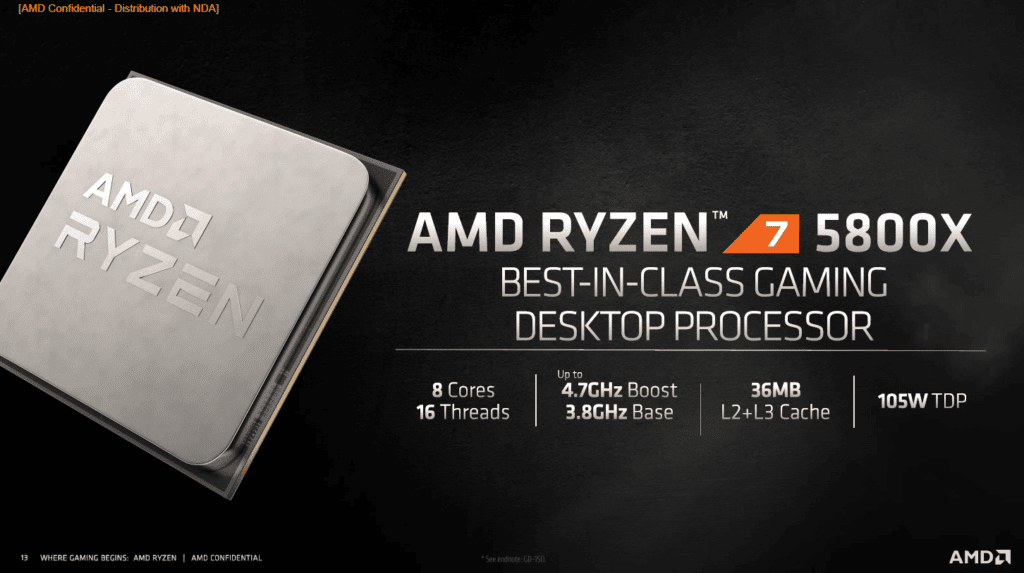
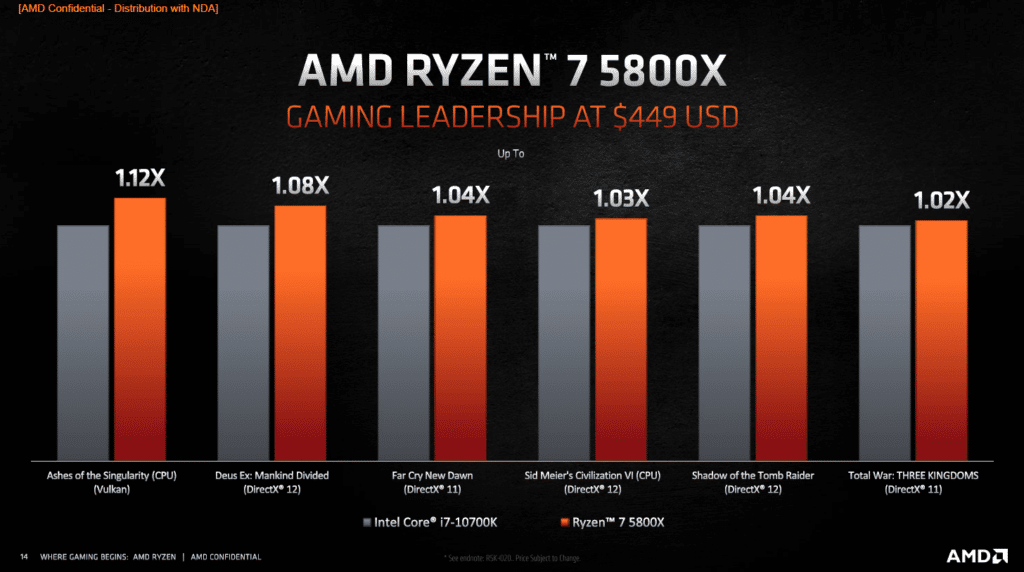
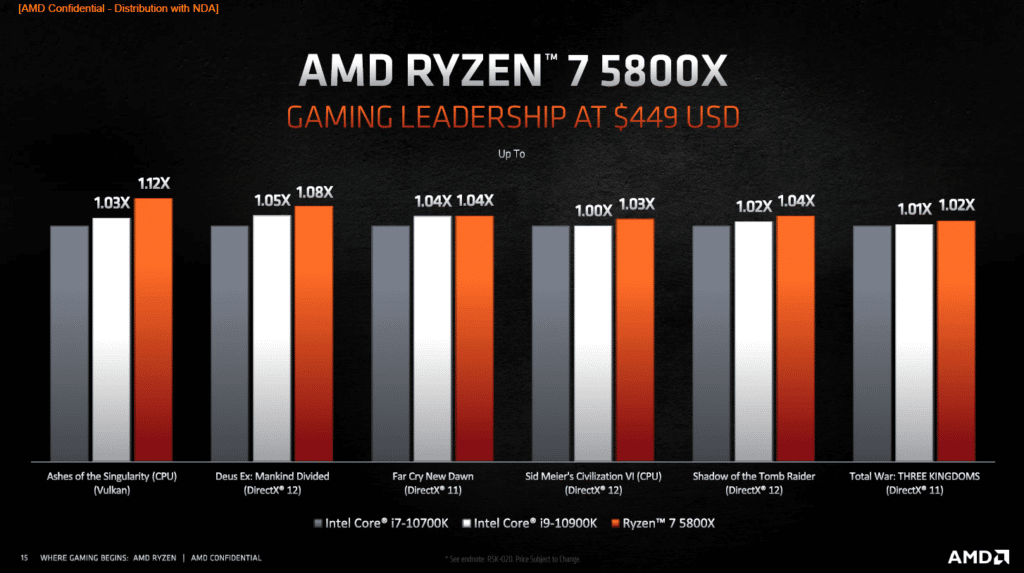
Today we are going to focus on the desktop processor AMD Ryzen 7 5800X performance, and compare it with the Ryzen 7 3700X. The AMD Ryzen 7 5800X was launched in November of 2020 with an MSRP of $449. This CPU is based on the newer Zen 3 architecture from AMD and runs on the socket AM4, which supersedes the Zen 2 architecture that the Ryzen 7 3700X was based on. One of the major advantages of Zen 3 versus Zen 2 is the +19% improvement in instructions per cycle (IPC) Zen 3 has over Zen 2 CPUs. This includes a re-organizing of the cores in the CCX complexes, combined with how the CCDs are laid out, inside the package to better optimize cache performance. One of the primary pitfalls with the Zen 2 architecture was the latency involved in cache performance between the CCXs and cores. The Zen 3 architecture vastly improves that situation and alleviates those issues improving cache latency.
Beyond the substantial improvements within the “Zen 3” microarchitecture, the AMD Ryzen 5000 Series has undergone significant design changes at the SoC architecture level. Whereas “Zen 2”/”Matisse” was a union of two core complexes (CCX) per compute die (CCD), with each CCX comprising 4C8T and 16MB of L3 cache, the “Zen 3”/”Vermeer” product now features a unified complex wherein each CCD now contains one single CCX consisting of up to 8C16T and 32MB L3 cache
On the next page, we will show detailed press presentation material, explaining the Zen 3 architecture in detail. Here is a summary of the Ryzen 7 5800X specifications below compared to the Ryzen 7 3700X.
| Specification | Ryzen 7 5800X | Ryzen 7 3700X |
|---|---|---|
| Architecture | Zen 3 / Vermeer | Zen 2 / Matisse |
| Process Node | 7nm CCD/12nm IOD | 7nm CCD/12nm IOD |
| Cores/Threads | 8/16 | 8/16 |
| L2+L3 Cache | 4MB L2/32MB L3 | 4MB L2/32MB L3 |
| Base Frequency | 3.8GHz | 3.6GHz |
| Max Boost Frequency | 4.7GHz | 4.4GHz |
| TDP | 105W | 65W |
| MSRP | $449 | $329 |
The Ryzen 7 5800X is an 8 core CPU with SMT so that it supports 16 threads, therefore it is an 8c/16t CPU design. It is based on the AMD Zen 3 architecture and manufactured on TSMC 7nm. It has 4MB of L2 cache and 32MB of L3 cache. It utilizes 1 CCD and 1 IOD. The base frequency is 3.8GHz and the max boost frequency is 4.7GHz with a TDP of 105W.
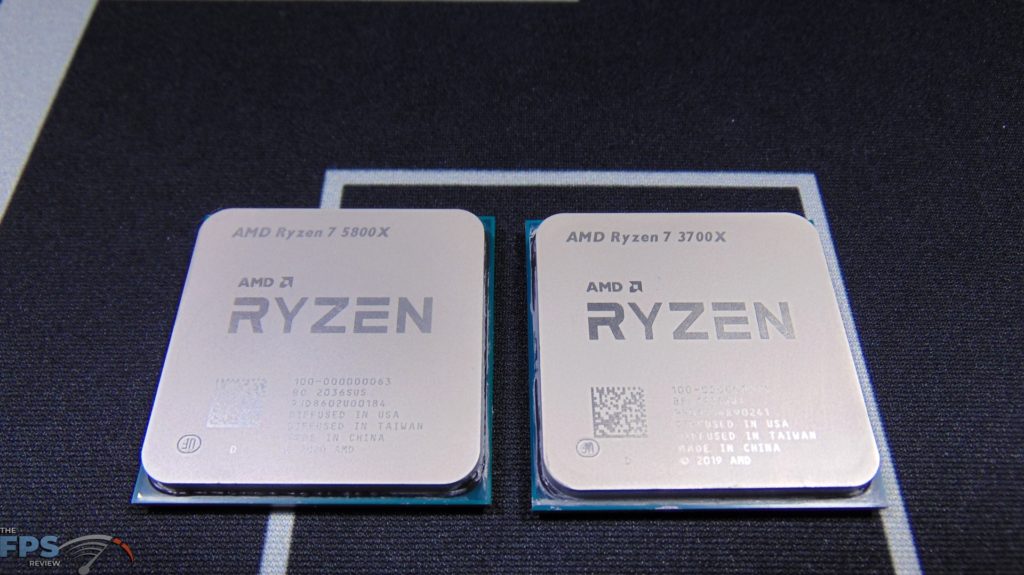
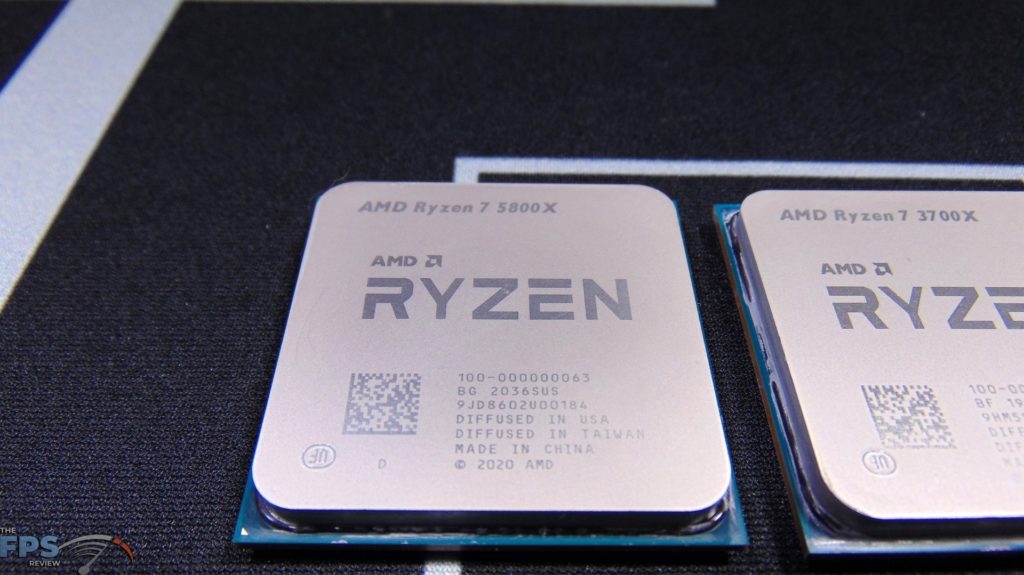
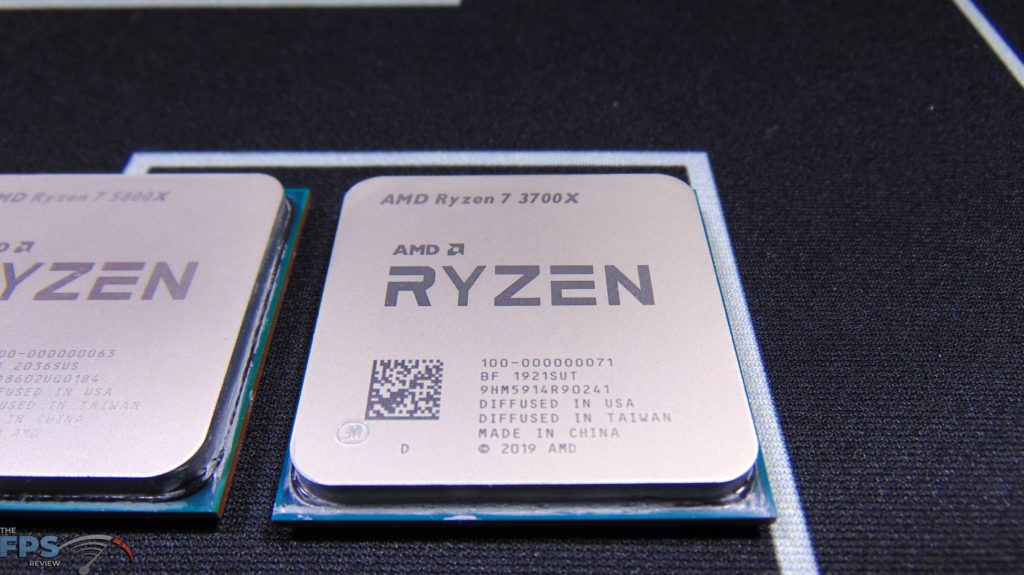
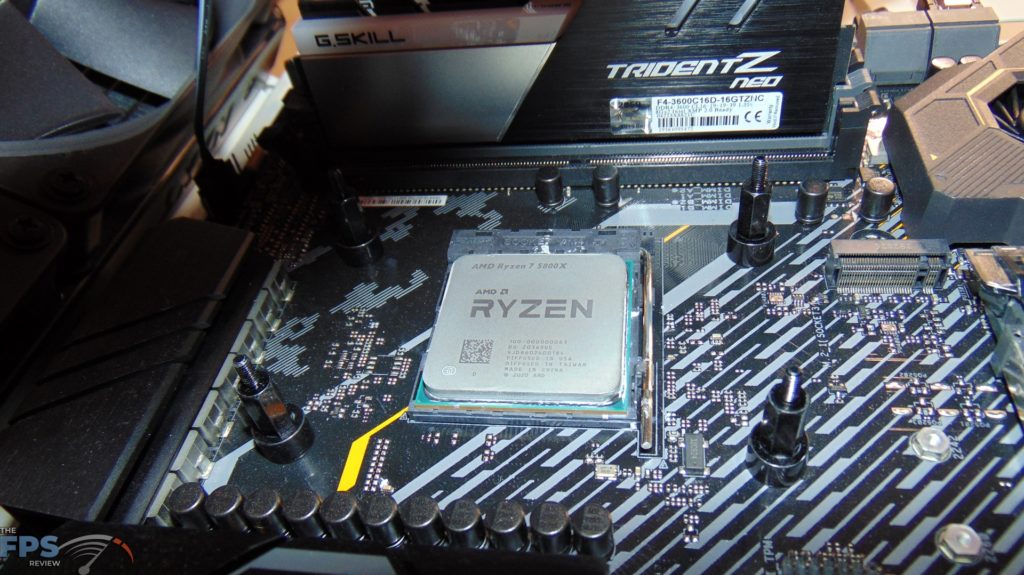
The Ryzen 7 5800X looks identical to the Ryzen 7 3700X, both being based on the AMD AM4 socket platform. The CPUs are the same size and z-height, and other for the lettering you wouldn’t be able to tell them apart. However, they are very different in terms of TDP, so you might want a beefier cooler with the Ryzen 7 5800X to get the most out of it. The higher 105W TDP versus the 65W TDP of the Ryzen 7 3700X is a reality of this CPU, and you do really see the temperature running much hotter on the Ryzen 7 5800X.
Another feature of the Ryzen 5000 series CPUs is the Precision Boost Overdrive or PBO support that can be enabled in the BIOS as an overclocking method increasing boost clocks by as much as +200MHz. We will utilize PBO on the Ryzen 7 5800X enabled in our BIOS as our overclocking results, as this is the official overclocking method for the CPU. You will see these results on our graphs as the “PBO” results.
Precision Boost Overdrive remains supported and is implemented as-designed for the AMD Ryzen 3000 Series processors. PPT, TDC, and EDC limits are automatically raised to match the VRM capabilities communicated by the specific motherboard’s BIOS parameters. Workloads that may otherwise be throttled by current or socket power can continue boosting until some other limiter takes effect. Users may also override boost by up to +200MHz with the AutoOC feature.


